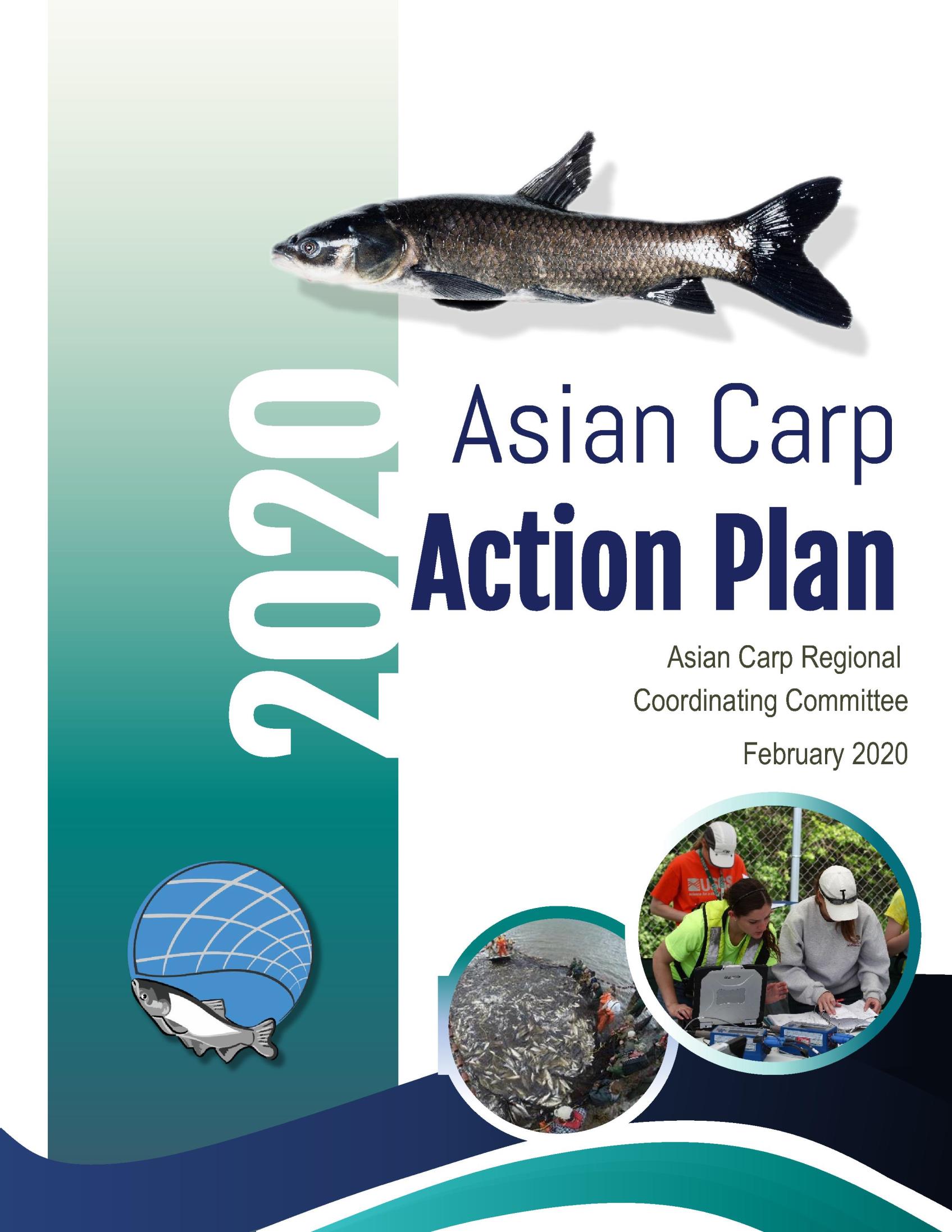Asian Carp Regional Coordinating Committee Releases 2020 Asian Carp Action Plan
March 2, 2020
The Asian Carp Regional Coordinating Committee is pleased to announce the release of the 2020 Asian Carp Action Plan, the partnership’s comprehensive portfolio of projects focused on Great Lakes protection.
“More than two dozen agencies – at all levels of government, in the United States and Canada – are banding together to keep Asian carp from invading the Great Lakes,” said U.S. EPA Region 5 Administrator Kurt Thiede. “We are committed to doing what is necessary to protect the Great Lakes from this threat.”
The updated Action Plan incorporates aggressive new prevention and control efforts, including expanded Asian carp population reduction measures along established fronts, large-scale field trials of potential barriers and deterrent technologies, and actions to address the growing black and grass carp threats. The Action Plan also addresses priorities for early detection and monitoring of all life stages of Asian carp, contingency response, secondary pathway mitigation, and stakeholder communication and outreach.
“The 2020 Action Plan builds upon a decade of hard work,” said U.S. Fish and Wildlife Service Great Lakes Regional Director Charlie Wooley. “We continue to work with our partners to develop and implement the best tools and strategies to keep bighead and silver carp out of the Great Lakes.”
Key initiatives for 2020 include:
- Large-scale field testing of potential new Asian carp deterrent technologies, including underwater sound (acoustics) and carbon dioxide.
- Increased use of focused commercial fishing to remove adult Asian carp in the upper Illinois River in support of population reduction goals.
- Use of fishery stock assessment data and tools to direct the timing and location of Asian carp harvest efforts for maximum impact.
- Increased support for interagency grass carp response and monitoring efforts in Lake Erie, with expanded capacity for capture and removal.
- Continued efforts to address the growing threat from black carp in the Upper Mississippi and Illinois rivers, including development of detection tools and strategies.
The Action Plan also includes support for the continued operation of the electric dispersal barriers in the Chicago Area Waterway System. In 2020, the Corps will complete the construction of the final electric dispersal barrier in Romeoville, Illinois.
“This system will be the most powerful of the three previously built barriers and provide unparalleled capacity to defend the Great Lakes against Asian carp. After safety testing, this system should be online in early 2021,” Colonel Aaron Reisinger of the U.S. Army Corps of Engineers stated.
In addition to the electric dispersal barriers, the U.S. Army Corps of Engineers is also the federal lead on the Great Lakes and Mississippi River Interbasin Study and the corresponding Brandon Road Lock and Dam project in Will County, Illinois. Although not included within the 2020 Asian Carp Action Plan strategy, the Brandon Road project represents an additional key prevention and control planning effort focused on Great Lakes protection.
“Rock Island District and the Corps of Engineers remain committed to stopping the spread of aquatic nuisance species, and we continue to be fully engaged with our partners in the ACRCC as we work to bring the GLMRIS Brandon Road project to fruition. Although no funding was allocated in the most recently released budget, the Rock Island District is still working with the State of Illinois to sign a design agreement that will have the Brandon Road project positioned to enter the pre-construction engineering and design (PED) phase as soon as federal and cost share funds are appropriated," stated Colonel Steve Sattinger.
the goal of the Action Plan is to prevent the introduction and spread of invasive Asian carp in the Great Lakes. The strategy incorporates the most current advances in science and technology for Asian carp prevention and control, and supports the goals and recommendations of the national Management and Control Plan for Bighead, Black, Grass, and Silver Carps in the United States.
"USGS staff continue to support the multi-agency efforts to address the threat of Asian carp to the Great Lakes. We remain committed to providing the information and tools our partners need to inform Asian carp management decisions," said Scott Morlock, U.S. Geological Survey Great Lakes and Missouri Basin Regions Deputy Director and Anne Kinsinger, Associate Director, U.S. Geological Survey Ecosystems Mission Area.

